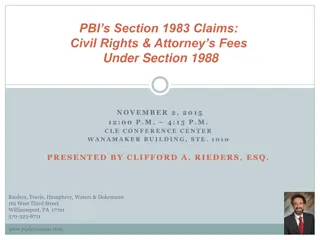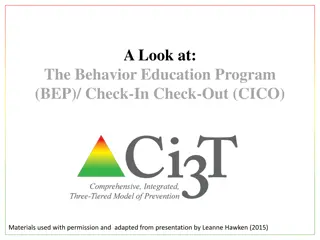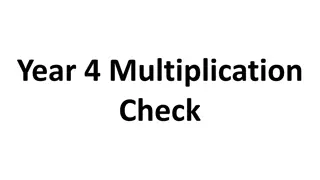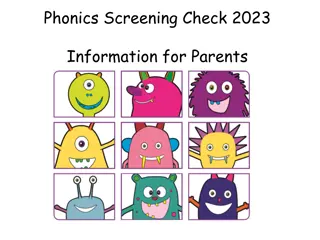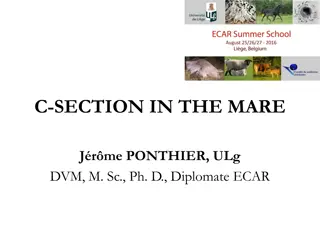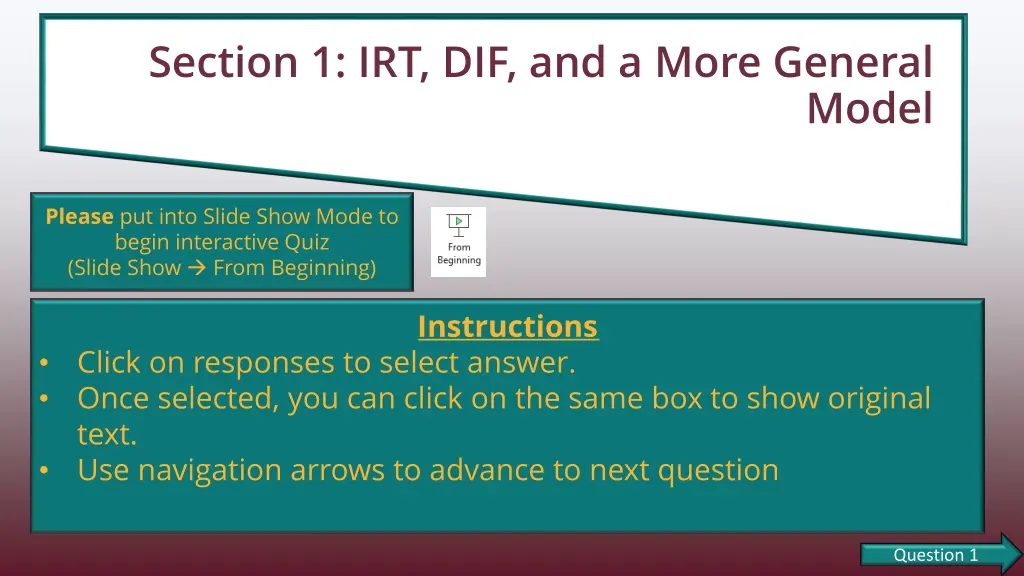
IRT, DIF, and General Modeling Concepts
Explore the parameters of the 2PL IRT model, understand the relationship between the item parameters of standard 2PL and slope-intercept 2PL, and differentiate between DIF and impact in educational measurement. Dive into key concepts with interactive quizzes.
Download Presentation

Please find below an Image/Link to download the presentation.
The content on the website is provided AS IS for your information and personal use only. It may not be sold, licensed, or shared on other websites without obtaining consent from the author. If you encounter any issues during the download, it is possible that the publisher has removed the file from their server.
You are allowed to download the files provided on this website for personal or commercial use, subject to the condition that they are used lawfully. All files are the property of their respective owners.
The content on the website is provided AS IS for your information and personal use only. It may not be sold, licensed, or shared on other websites without obtaining consent from the author.
E N D
Presentation Transcript
Section 1: IRT, DIF, and a More General Model Please put into Slide Show Mode to begin interactive Quiz (Slide Show From Beginning) Instructions Click on responses to select answer. Once selected, you can click on the same box to show original text. Use navigation arrows to advance to next question Question 1 Question 1
Knowledge Check 1 What are the item and person parameters of the 2PL IRT model? This is the correct answer. difficulty item parameters. ?? is the person parameter. ?? and ?? are the discrimination and A This response flipped the difficulty and discrimination parameters. The a parameters are discrimination, while b are difficulty. discrimination item parameters. ?? is the person parameter. ?? and ?? are the difficulty and B In the most common version of the 2PL and the version presented to begin this module, the b parameters represent difficulty, not easiness. easiness item parameters. ?? is the person parameter. ?? and ?? are the discrimination and C This response flipped the person and item parameters. The a and b parameters are discrimination and difficulty item parameters, while ? is the person parameter. ?? is the item parameter. ?? and ?? are the person parameters. D Previous Question Next Question Previous Question Next Question
Knowledge Check 2 How do the item parameters of the standard 2PL relate to the item parameters of the slope-intercept 2PL? This response is correct about intercepts but the equality between slope and discrimination only holds when the latent variable is scaled as standard normal. Otherwise, slopes and discriminations are not equal. However you scale , intercepts are inverse difficulties multiplied by the discrimination. A Slopes do not directly translate to item difficulties; intercepts do not translate to discriminations. Rather, slopes and discriminations are closely related, while intercepts and difficulties are closely related. Slopes are rescaled versions of the item difficulties, while intercepts are rescaled versions of the discriminations. B When ~N(0,1) to identify the model, slopes and discriminations are equal while intercepts are inverse difficulties multiplied by the This is the correct answer. The equality between slope and discrimination only holds when ~N(0,1). discrimination. C They have a direct relationship; see the correct answer. They are only indirectly related. D Previous Question Next Question Previous Question Next Question
Knowledge Check What differentiates DIF from impact? Impact refers to group differences in the latent variable distribution. DIF refers to group-based differences in responding to a given item, above and beyond impact. 3 This is not typically true in educational measurement demographic-based DIF is generally cast as a fairness issue that warrants an investigation into an item followed by potentially discarding the item, though DIF for non-cognitive constructs is sometimes incorporated into the measurement model instead of discarding the item. Impact is about the test as a whole and DIF is about items, but neither one is a problem. A We generally do expect to find impact, and DIF is generally not expected a priori. If it were, those items should not be administered in the first place. DIF is expected on some test items, but we do not usually expect to find impact as part of DIF analysis. B This is not accurate DIF is an issue for both fairness and validity, while impact is not necessarily an issue at all. Impact is a fairness issue, while DIF is a validity issue. C Group-level differences in a construct of interest are not automatically or generally interpreted as a fairness or bias issue. However, at the item level, group-level differences contingent on the overall construct are a fairness issue DIF. generally a fairness/bias issue that test developers seek to mitigate. Impact is generally expected and not directly mitigated, while DIF is D Previous Question Next Question Previous Question Next Question
Knowledge Check 4 What are the main limitations of multigroup IRT DIF analysis? (Select all that apply) Multigroup methods can be used with more than one grouping variable, but require the creation of new variables for each combination of groups, potentially creating a large number of groups with parameter estimates for each combination. With more than one grouping variable, analysis is cumbersome. A Multigroup methods cannot accommodate continuous background variables; they must be discretized into a categorical variable, coarsening the variable and losing information. The model does not directly accommodate continuous background variables. B Variances can freely differ across groups in multigroup analysis. In multigroup IRT, typically the first group s variance is fixed to 1 and all others are estimated. Multigroup analysis cannot accommodate variance impact. C With more than one grouping variable, analysis is impossible. See correct answer it is not impossible, but it is quite cumbersome. D Previous Question Next Question Previous Question Next Question
Knowledge Check 5 What is the main limitation of the MIMIC (with interaction) model? The model is limited to one background variable. MIMIC models can accommodate an arbitrary number of background variables. A This is correct historically, the MIMIC model only included mean impact and intercept DIF, though the MIMIC-with-interaction model incorporated slope DIF. The model does not include variance impact. B Mean impact is fundamental to the MIMIC model, predating the inclusion even of intercept DIF. The model does not include mean impact. C The MIMIC-with-interaction model does allow for slope moderation that is the interaction in the name. A traditional MIMIC model does not. The model does not allow for slope moderation. D Previous Question Next Question Previous Question Next Question
Knowledge Check 6 How does MNLFA incorporate the features of both of these models? (Select all that apply) MNLFA is compatible with an arbitrary number of background variables, limited only by computational complexity and (at extreme numbers of covariates) identification. MNLFA accommodates multiple background variables. A MNLFA can accommodate continuous and ordered categorical indicators, as well as censored, nominal, count, and other variable types. MNLFA is limited to continuous indicators. B MNLFA does not estimate group-specific item parameters. Baseline parameters are estimated that correspond to all background variables having a value of zero ( _j, _j below). DIF is estimated as a deviation from this baseline parameter as a function of the background variable, represented by the bolded vectors of DIF parameters in the item response function ????? ???= 1 = ??+ ?? MNLFA directly produces group-specific item parameters. C ????+ ??+ ?? ??. See Bauer (2023), p. 447. MNLFA estimates mean impact via a linear relation between background variable and the mean of ; it estimates variance impact via a log-linear relation from background variable to variance. ?~?(? + ? ??,?2 ?? ??) MNLFA allows for mean and variance impact to be estimated. D Previous Question Next Question Previous Question Next Question
You have reached the end of this learning check Please click anywhere to exit! Previous Question Previous Question










